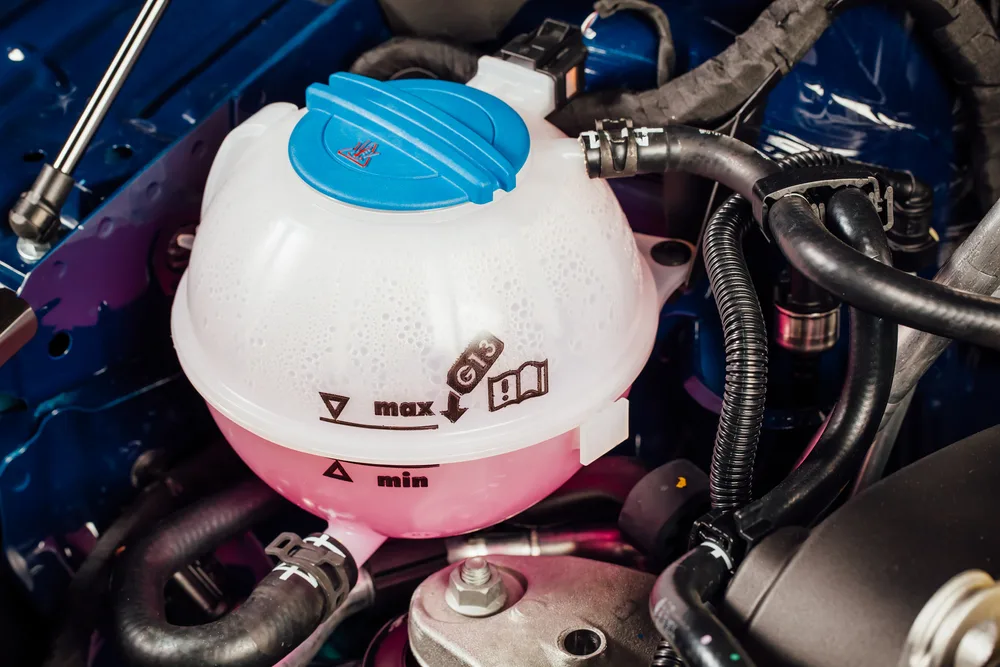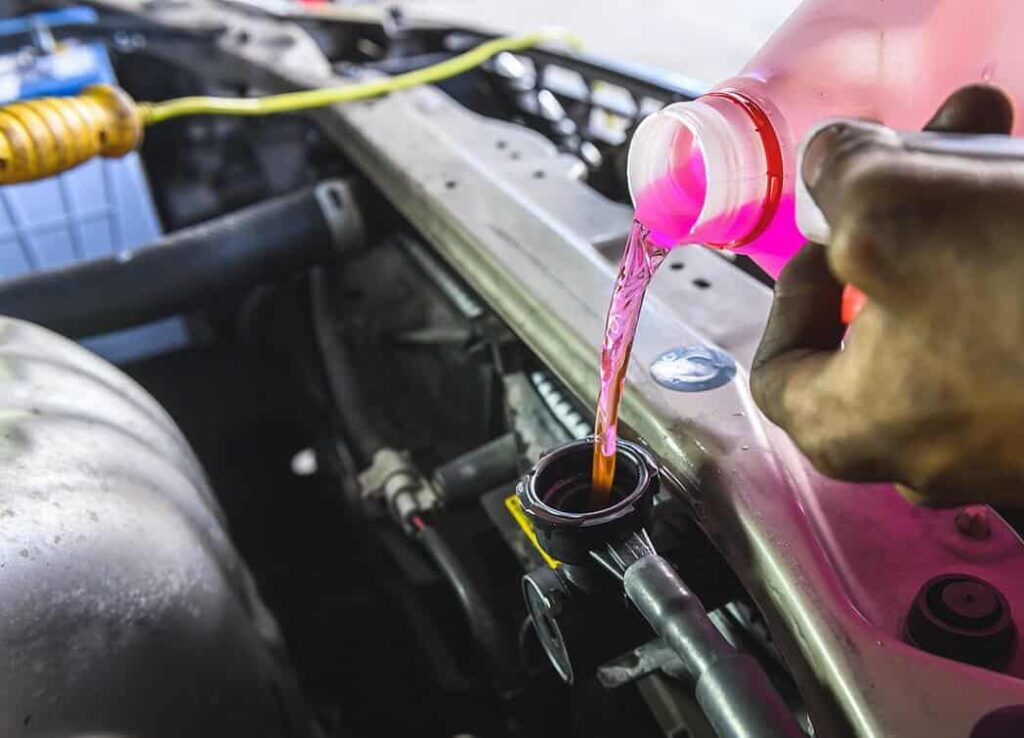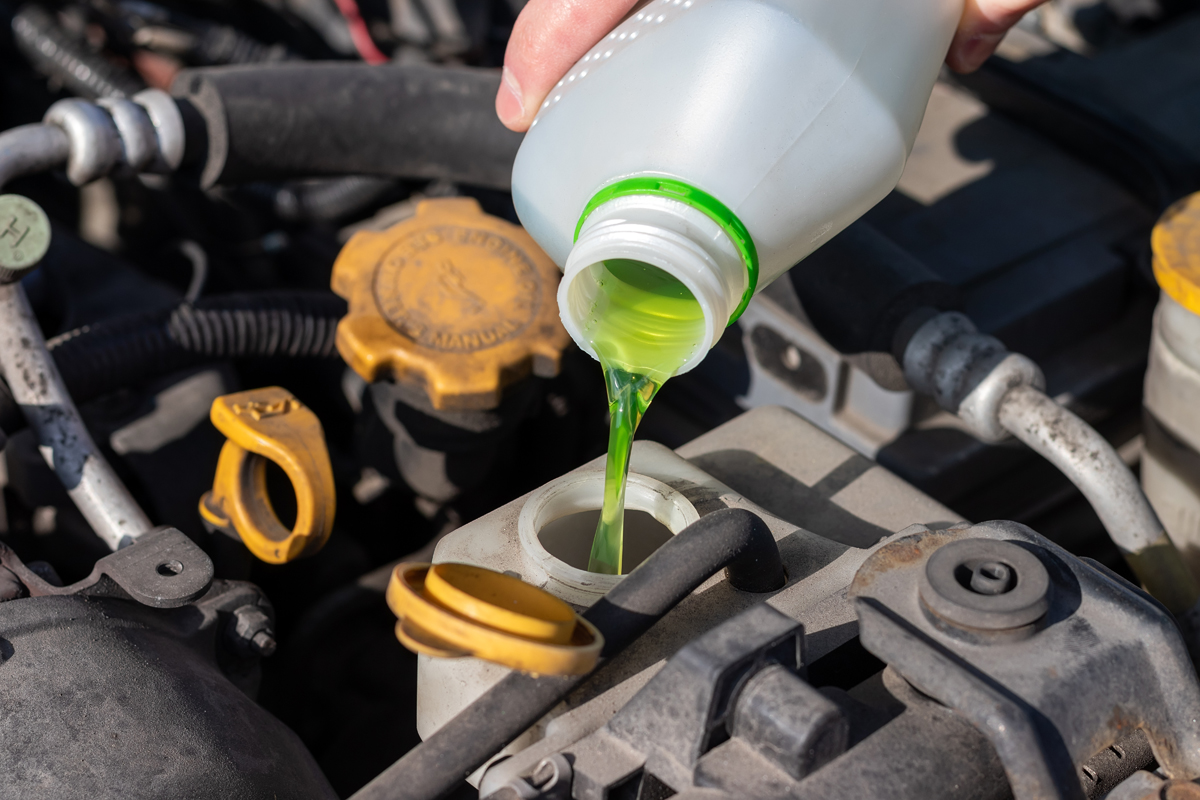Your car’s engine is a powerhouse—but it generates a tremendous amount of heat. To prevent overheating, engine damage, or breakdowns, your vehicle relies on a crucial fluid: engine coolant. Also known as antifreeze, coolant helps regulate engine temperature and ensures smooth operation in both hot and cold conditions.
In this article, we’ll cover what engine coolant is, how it works, the different types, how to use it properly, and signs that your coolant system needs attention.
❓ What Is Engine Coolant?
Engine coolant is a liquid mixture—usually made of ethylene glycol or propylene glycol and water—that circulates through your car’s engine and radiator. It absorbs heat from the engine and releases it through the radiator to prevent overheating.
Coolant also prevents the liquid from freezing in cold weather and boiling in extreme heat, making it essential for year-round vehicle operation.
🔧 How Does Engine Coolant Work?

- The coolant flows through coolant passages in the engine block and cylinder head.
- It absorbs heat produced by combustion and friction.
- The heated coolant moves to the radiator, where it releases heat to the outside air.
- A thermostat and coolant pump (water pump) regulate the flow based on engine temperature.
This loop ensures your engine stays in the optimal temperature range for performance and longevity.
🧪 Types of Engine Coolant
Not all coolants are the same. Using the wrong type can lead to corrosion, leaks, or poor cooling.
🟢 1. Inorganic Additive Technology (IAT)
- Typically green in color
- Used in older vehicles (pre-1990s)
- Requires replacement every 2 years or 30,000 miles
🔴 2. Organic Acid Technology (OAT)
- Orange or dark red color
- Found in newer cars
- Lasts up to 5 years or 150,000 miles
🟡 3. Hybrid Organic Acid Technology (HOAT)
- Yellow or turquoise
- Combines benefits of IAT and OAT
- Common in European and American vehicles
👉 Always check your owner’s manual for the correct type and color before topping up or replacing coolant.
🧰 How to Use Engine Coolant Properly
✅ 1. Check Coolant Levels Regularly
- Look at the coolant reservoir when the engine is cold. It should be between the MIN and MAX lines.
✅ 2. Use the Correct Coolant Mix
- Most coolant is pre-mixed, but if not, mix it 50/50 with distilled water (not tap water).
✅ 3. Never Open When Hot
- Don’t remove the radiator cap when the engine is hot—it can cause serious burns from pressurized steam.
✅ 4. Flush and Replace Periodically
- Over time, coolant loses its effectiveness. Flush the system according to manufacturer recommendations (usually every 2–5 years).
⚠️ Signs of Coolant Problems

Recognizing early signs of coolant issues can save you from costly engine repairs:
- 🚨 Engine Overheating
- 🌫️ White smoke from exhaust
- 💧 Low coolant level or visible leaks
- ⚙️ Coolant warning light on dashboard
- 🧊 Sweet smell under the hood (coolant leak)
If you notice any of these, check your coolant level and inspect for leaks immediately.
🧼 Engine Coolant Maintenance Tips
- 🧯 Always use distilled water when mixing coolant.
- 🧪 Test coolant pH and freeze/boil protection with test strips.
- 🔄 Flush the radiator and coolant system as part of scheduled maintenance.
- 🔍 Inspect hoses and radiator for wear or cracking.
✅ Benefits of Proper Coolant Usage
- 🚙 Prevents Engine Overheating
- ❄️ Protects Against Freezing in Winter
- 🛡️ Prevents Corrosion & Rust
- 💨 Enhances Engine Efficiency
- 🔧 Extends the Life of Engine Components
FAQs About Engine Coolant Usage
Q1: Can I use water instead of coolant in an emergency?
In emergencies, distilled water can be used temporarily—but it lacks anti-corrosion and boiling protection. Always refill with proper coolant as soon as possible.
Q2: How often should I replace engine coolant?
Typically every 2–5 years, depending on the type and manufacturer guidelines.
Q3: Can I mix different coolant types?
No. Mixing incompatible coolants can create sludge and damage the cooling system.
Q4: What happens if I run out of coolant?
Your engine can quickly overheat, leading to warped heads, blown gaskets, or even complete engine failure.
Q5: Is engine coolant the same as antifreeze?
Not exactly. Antifreeze is a concentrated chemical; coolant is a 50/50 mixture of antifreeze and water.
Q6: Why is my coolant level dropping frequently?
You might have a leak, faulty radiator cap, or head gasket issue. Get it inspected ASAP.
Q7: Does coolant color matter?
Yes. Color indicates the type of coolant. Always use the correct one specified in your vehicle’s manual.
Q8: What is a coolant flush, and why is it important?
A coolant flush removes old, dirty coolant and deposits from the system. It helps maintain engine health and prevents corrosion.
Conclusion: Engine Coolant Usage Keeps Your Car Running Cool
Engine coolant is a small component with a huge impact on engine performance and safety. Proper coolant usage ensures your engine stays cool under pressure, runs smoothly, and lasts longer. Whether you’re prepping for a summer road trip or gearing up for winter, keeping your coolant levels in check is one of the smartest moves you can make as a car owner.




